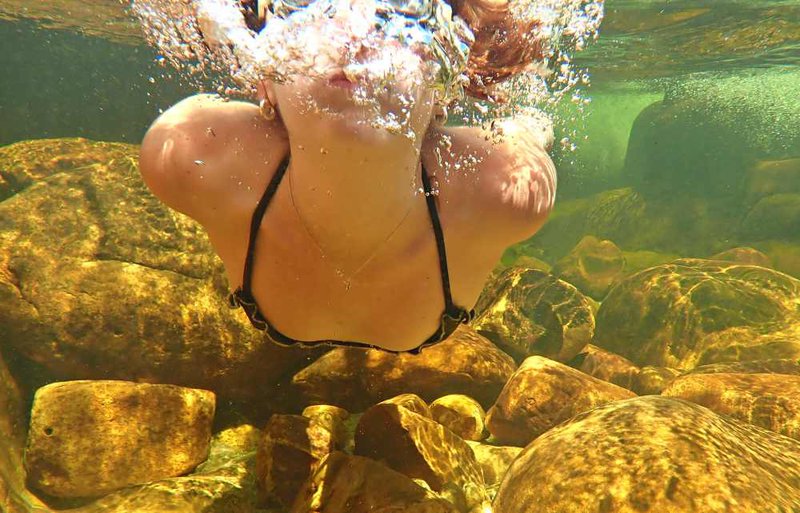Guided Wilderness trails of the Cederberg
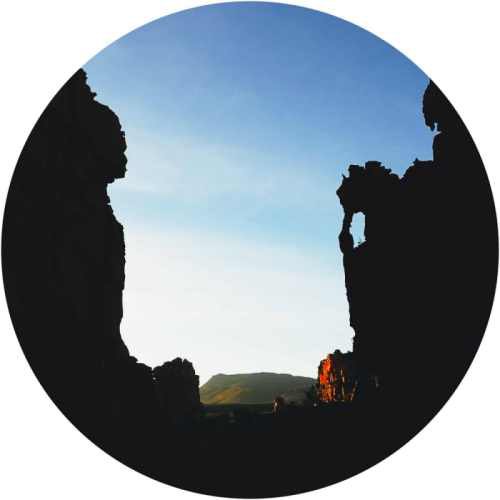
HEART OF VASTNESS
Journeying in Cederberg ...
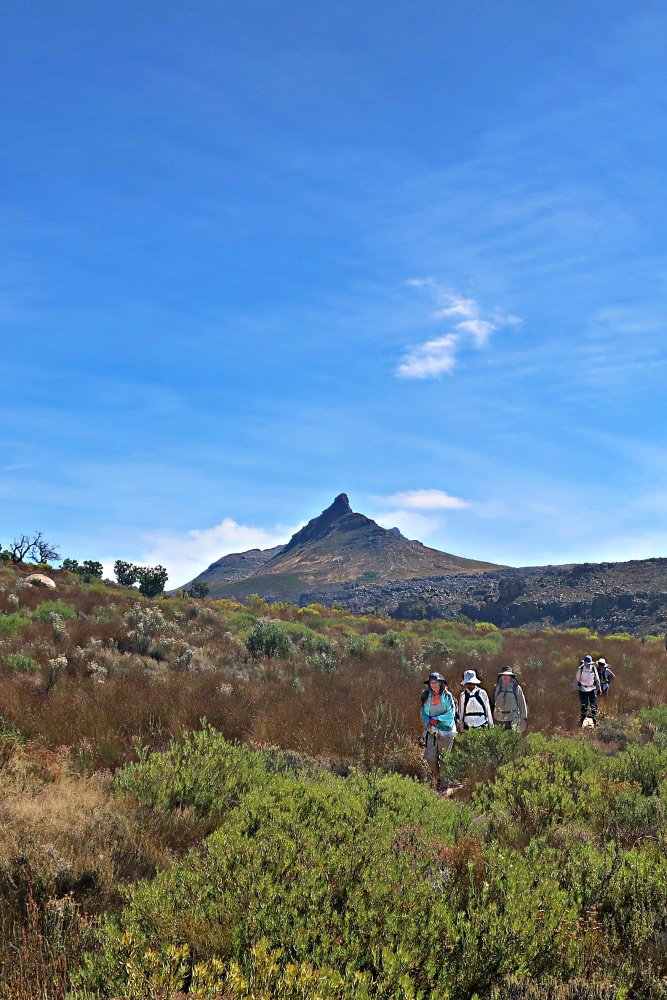
... into remote tranquility
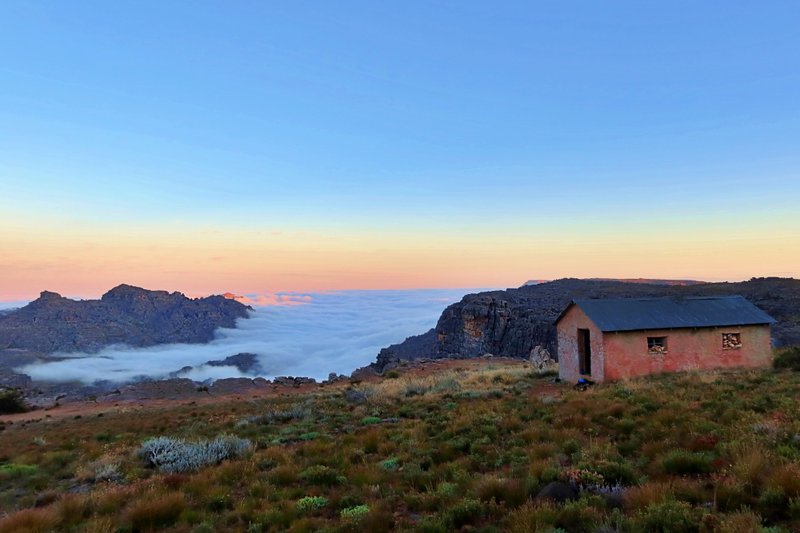
Huge, wild, ravished by time.
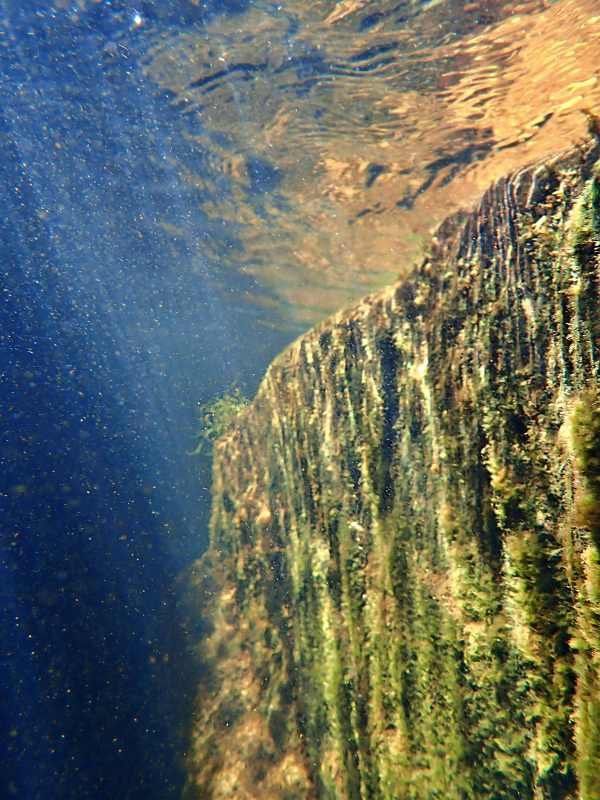
Hike hardcore, or take purposeful explorations or soulful meanders.
- three hours drive from Cape Town
- set in the Cape Floral Kingdom
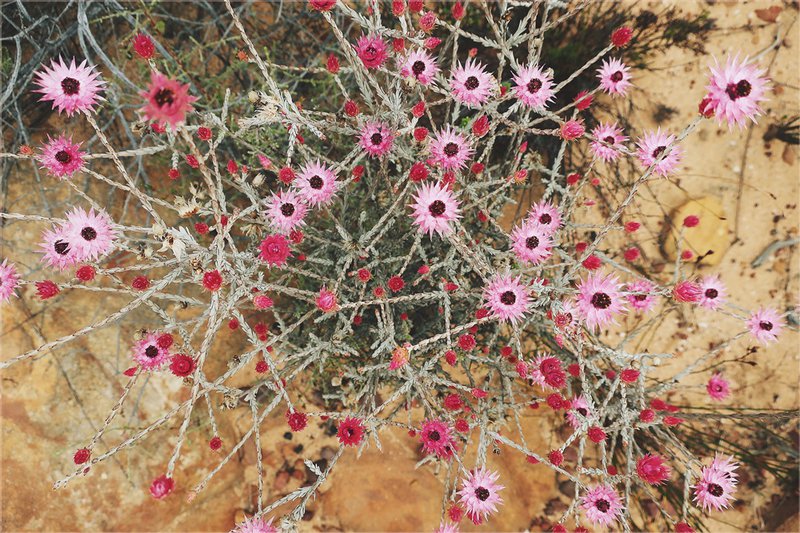
- ranges 50 kilometers from north to south / 20km from east to west
The Cederberg Wilderness Area, with about 274km of unmarked hiking trails, is at the heart of the range. It has World Heritage status, and is mostly administered by Cape Nature.
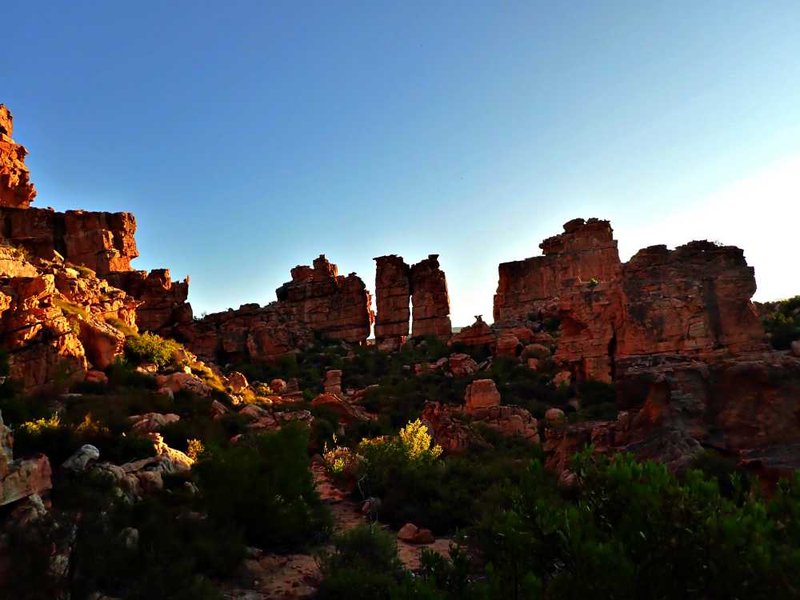
It’s a vegetative blend of classic fynbos and succulent Karoo. There are nearly two thousand species, including some of the rarest flowers around.
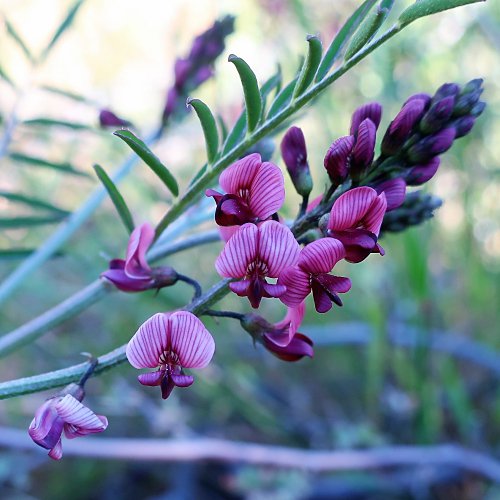
As for it's name?
The vast cedar forests that grew above 1000 meters are long gone.
The region's furniture, as well as telegraph poles were - and some restored river mills still are - made of local timber.
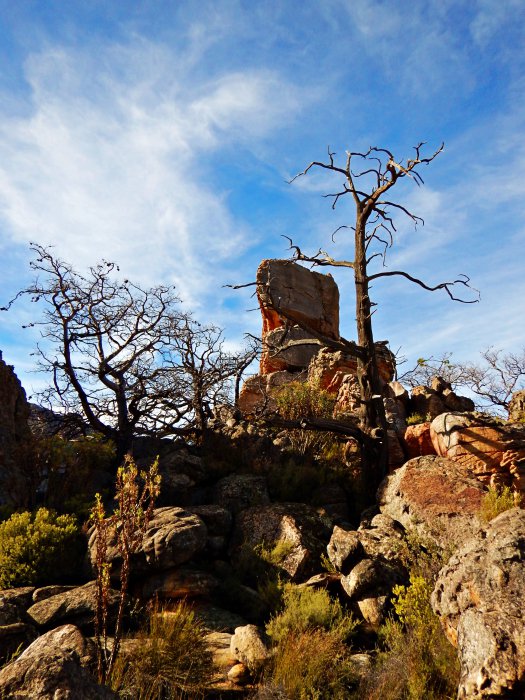
Fire damaged skeletons remain. A few live cedar trees hold out in high crags. Conservationists still try for regrowth, as seen below - a cedar re-wilding project. One can hike through a young cedar forest.
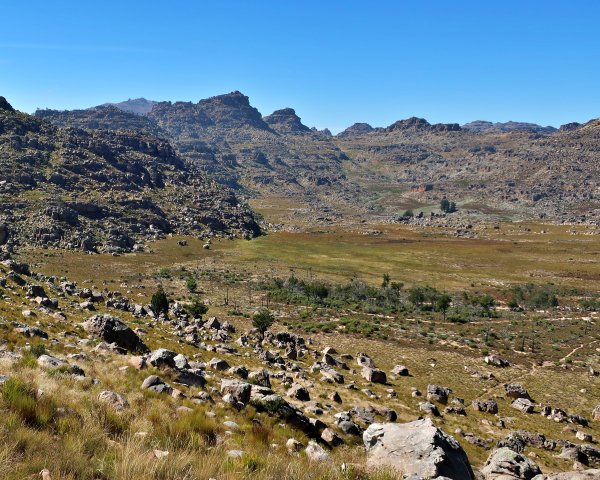
Take trails through kloofs of afro-montain forest, as well as cedar forest remnants.
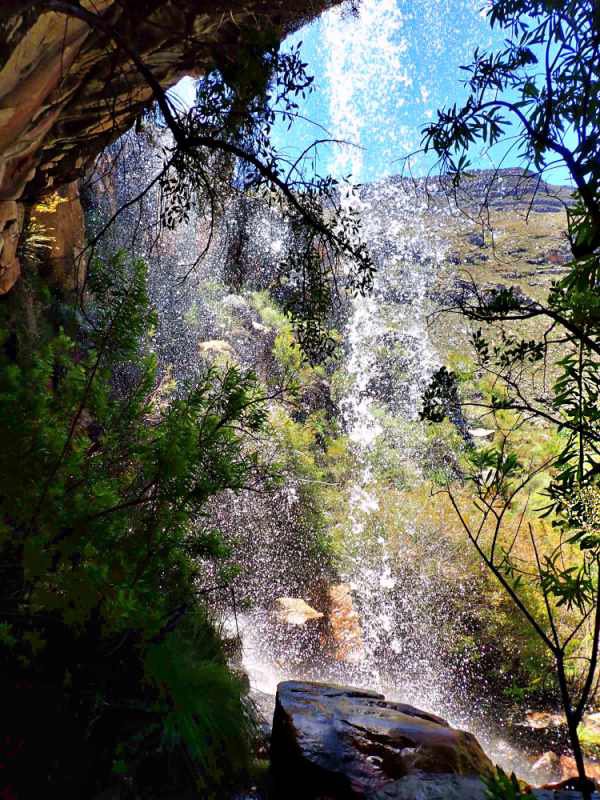
Walks, easy rambles, and multi-day guided hikes.
- Hoist a pack on your back & make a Real Getaway
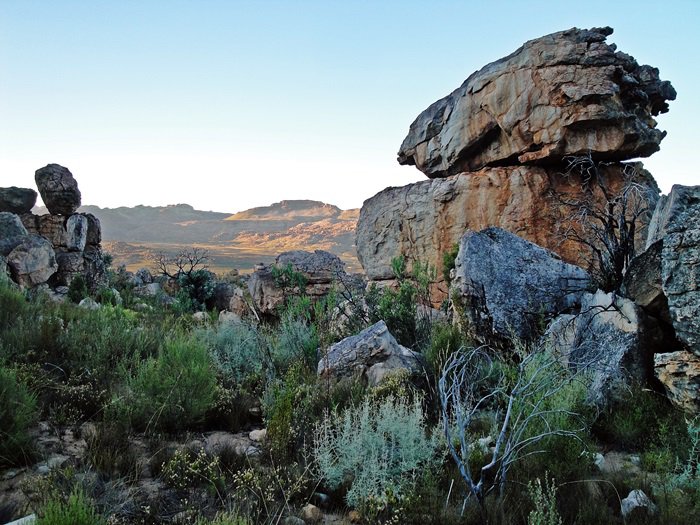
Deep on remote trails traversing rugged terrain, human encounters are rare.
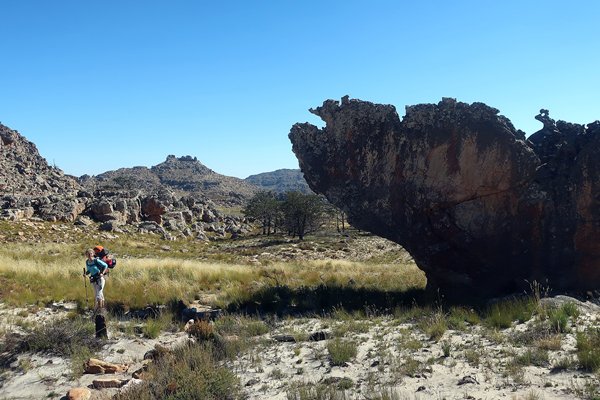
There's an almost Jurassic atmosphere.
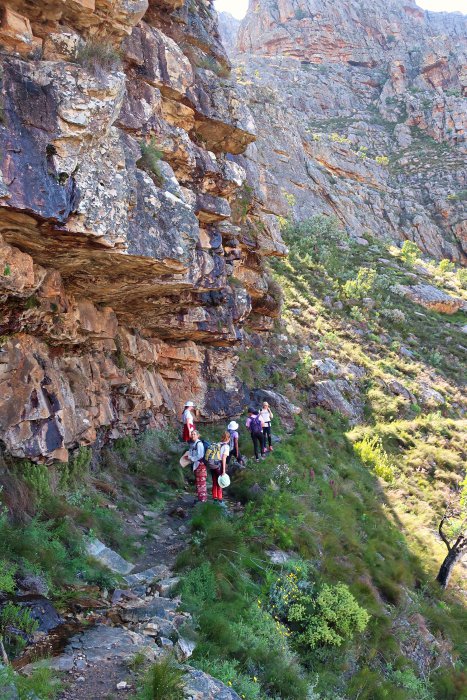
Hike hard, or spend leisurely days out, and return to camp or cottages based at Cape Nature facilities or private farm-resorts.
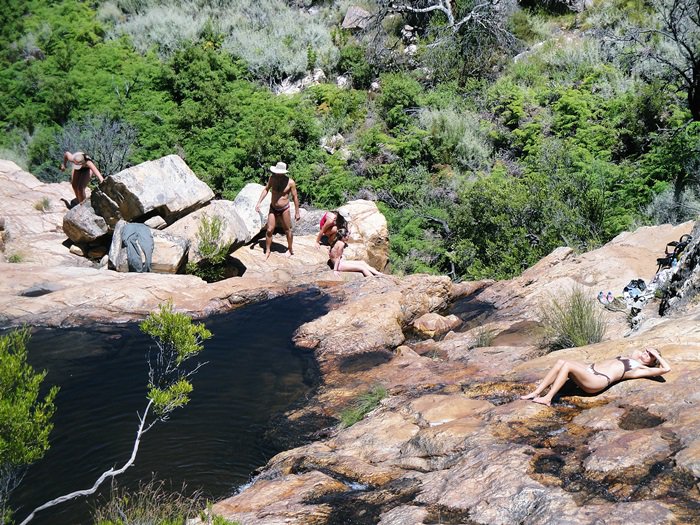
Overnight trail options.
Pack carefully and equip well. The climate here can be harsh. Be prepared for long treks. Sleep overnight in huts; or in tents, or in the open. Shops and or emergency help, depending on where you are and how you're travelling, can be days away. Preparation is key. Especially if all that you have to protect yourself from the elements is on your back.
- On multi-day hikes one needs to be entirely self-sufficient.
- In summer water can be scarce.
- Cederberg has wet winters. Temperatures dip near zero.
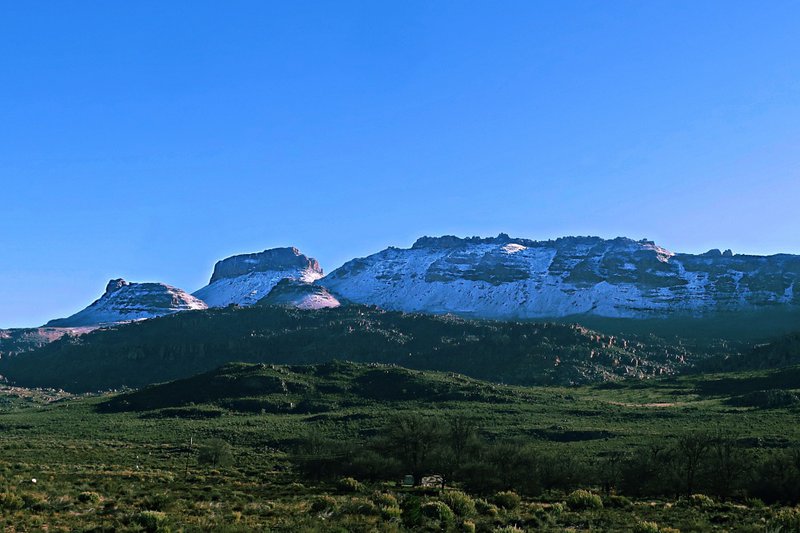
- Be suitably equipped. Prepare for all conditions.
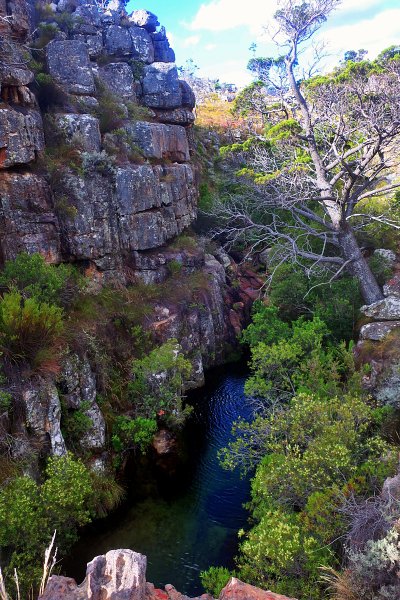
Accommodation
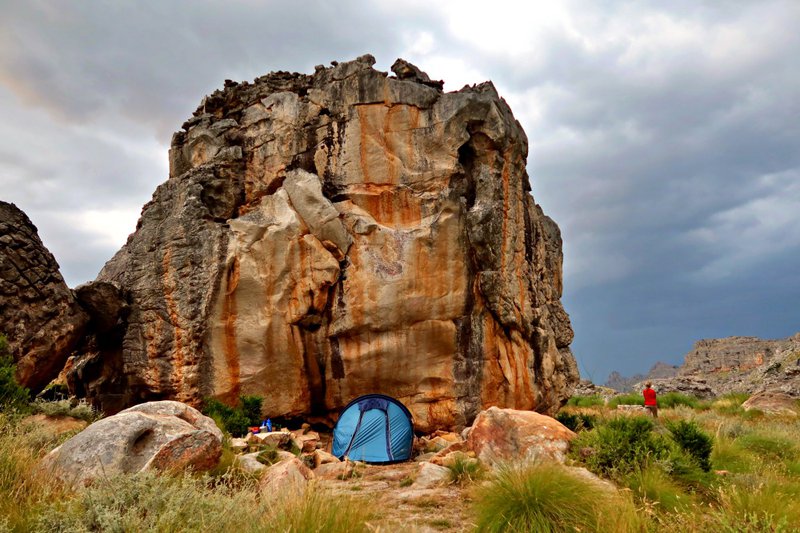
From five star bush spas to just what you can carry in your backpack ...
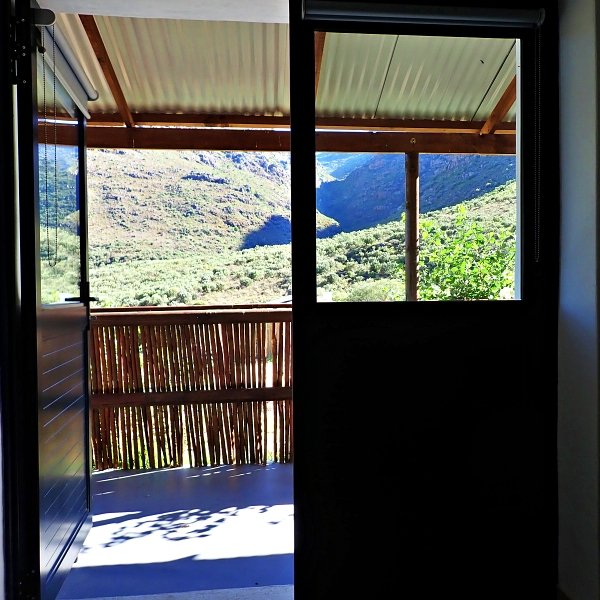
- Cottages and camp-grounds run by Cape Nature and private landowners close to various trail-heads.
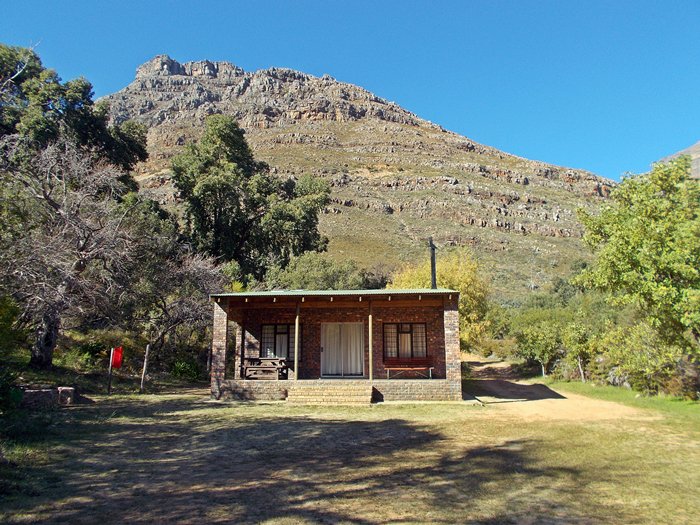
On trail it gets more rustic
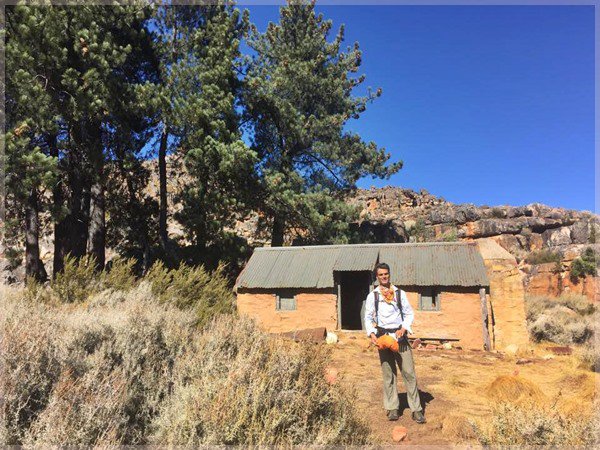
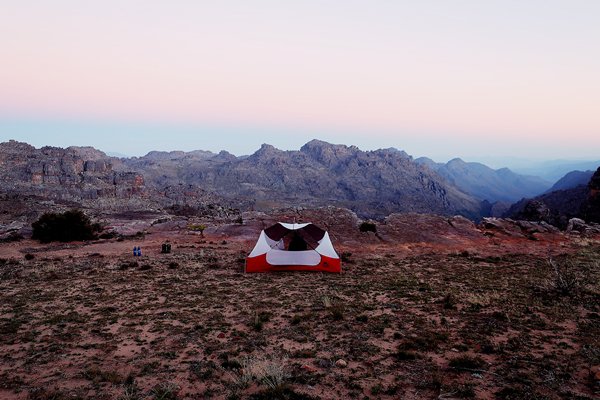
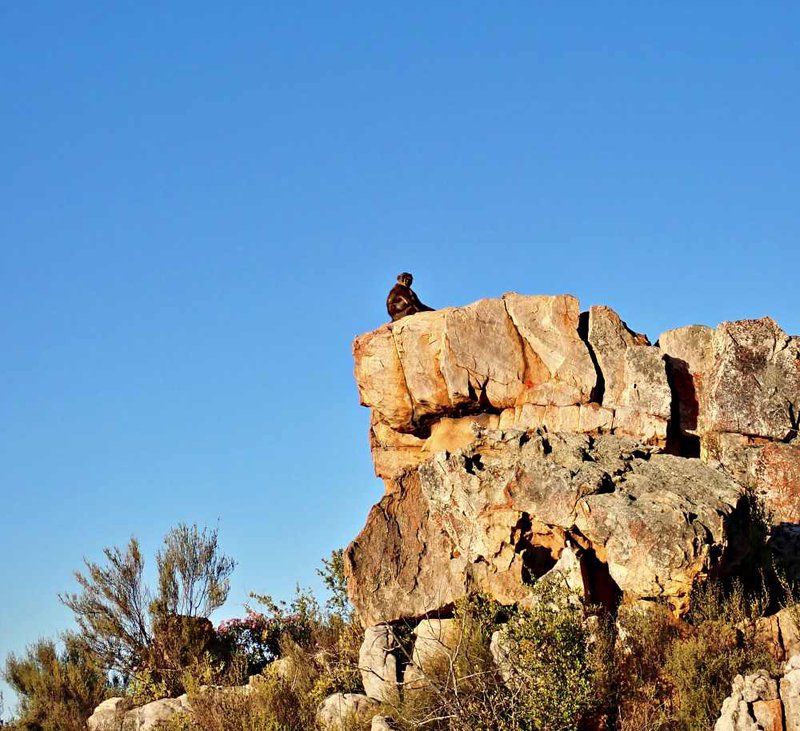
Wildlife
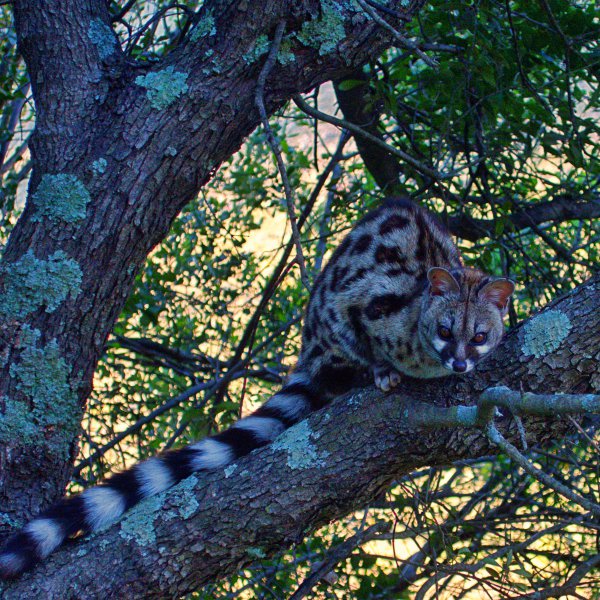
Encounters with non-humans - like antelope, baboons, dassies and genets (above) - are occasional.
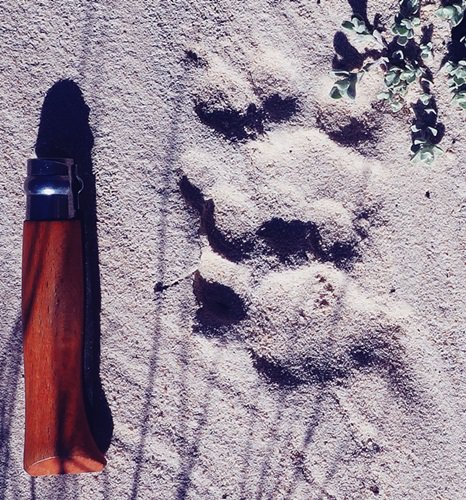
On-trail: signs of stealthier predators.
Pools and streams are home to rare frog species. There are snakes; seen less in the cold months. Creepy-crawlies, small rodents scurry around in the straw-floor huts. Should weather conditions dictate you sleep in a hut, check round carefully, and you could pitch your tent inside it and zip up.
TheCape Leopard Trusts camera traps illustrate a far richer scene.
Activities besides hiking and camping
- Visit the highest local wine farm
- Tour rock art sites.
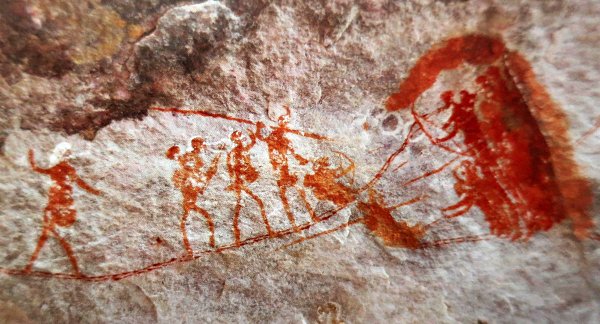
- Tour the sky. Forget human-set boundaries ... Get the bigger picture. Explore the stars at the local observatory.
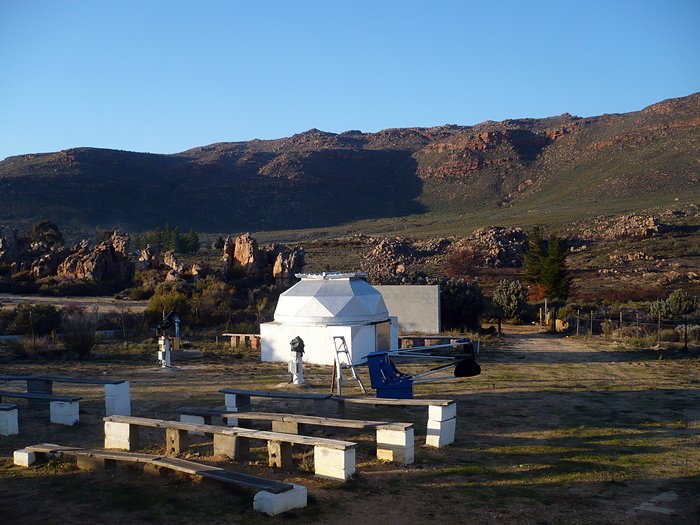
Experts guide you through the night sky. (Weekends when no full moon.)
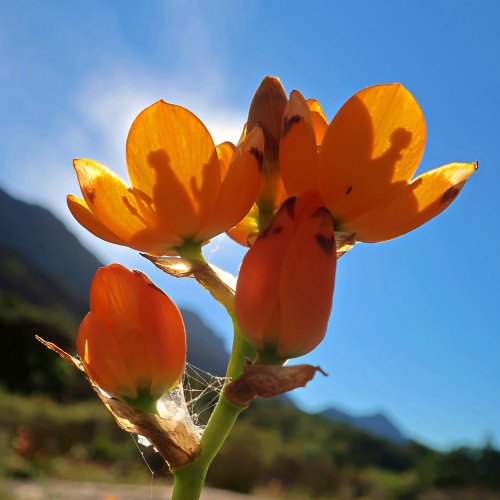
Best Time to go?
Spring brings on a wildflower bonanza.
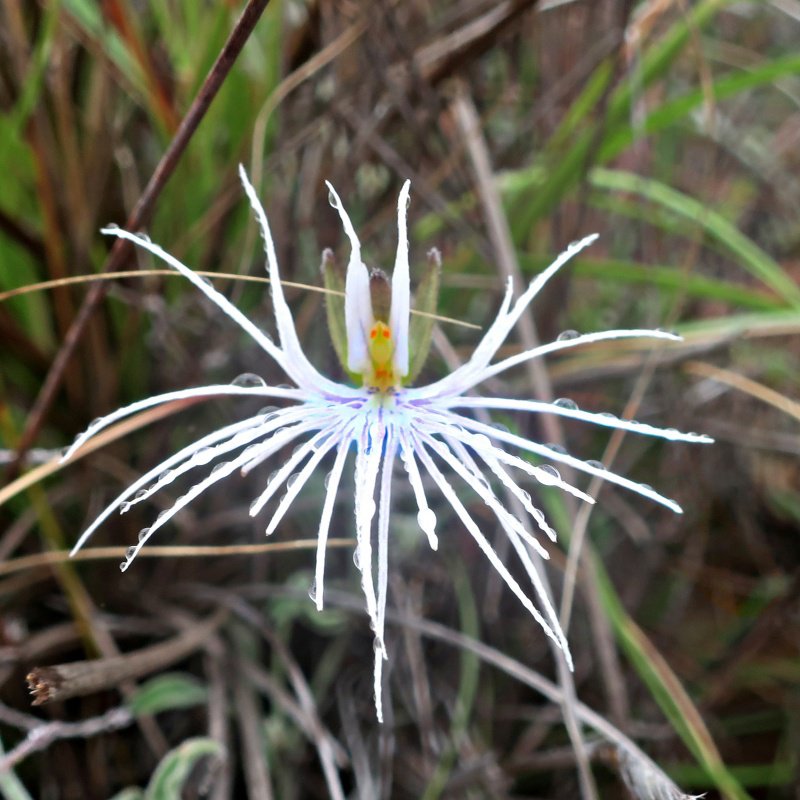
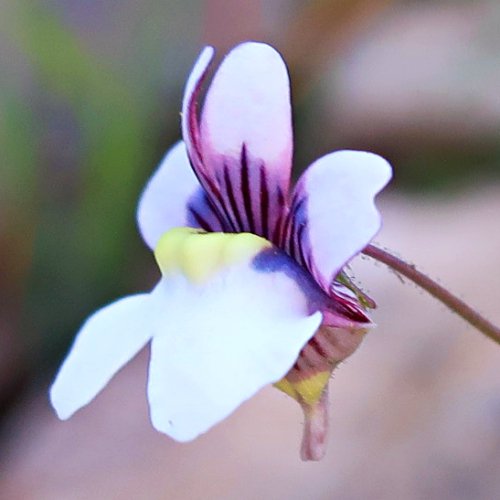
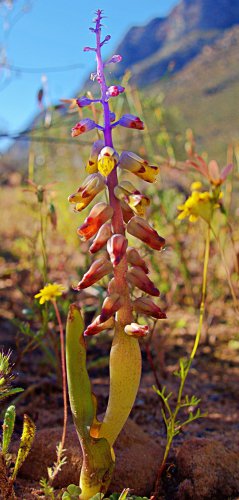
- For more information about custom-made guided hikes in the Cederberg Wilderness region, please contact me.
- Taking a satellite phone or some such emergency contact device is strongly advised on remote hikes.
- Notes on Nature's Orphan trees - the Cape cedars here.
Reviews:
"Did an overnight hike with Nick Ashby at the Cederberg Wilderness, with stops at the Middleburg hut, Sleepad Hut and Crystal Pools. Apart from being an excellent and careful guide with great knowledge of the area, Nick made it a truly memorable experience with his love of plants, animals and natural history, he explained route options made us decide on the options together."
